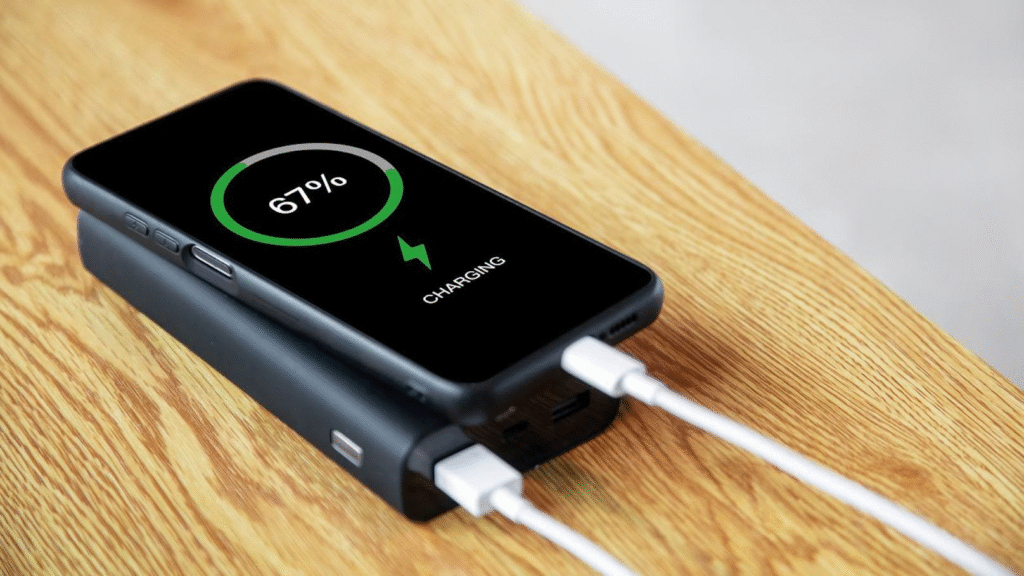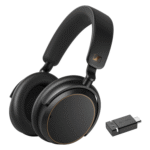
In today’s digital-first world, running out of battery can bring everything to a standstill. Whether you’re traveling, commuting, or working remotely, a reliable power bank ensures your devices stay charged and functional when it matters most. But with hundreds of options available, how do you choose the right one?
This comprehensive guide highlights 7 key things to consider when buying a power bank in 2025, plus helpful Do’s & Don’ts, to make your decision easier and smarter.
⚡ 1. Fast Charging & Voltage Compatibility
Why it matters: Not all power banks are created equal. Some charge slowly, while others offer rapid charging that saves precious time.
- Check output voltage & amperage: Most smartphones charge at 5V, but fast-charging protocols like USB-C Power Delivery (PD) or Qualcomm Quick Charge boost output up to 12V or even 20V.
- Higher amps = faster charging: Look for output between 2A to 3.5A for efficient charging.
- Smart charging: Premium banks auto-detect your device and adjust output accordingly.
Tip: Ensure compatibility with your devices to avoid overheating or slow charging.
✅ Do: Choose a power bank with fast charging support (PD or QC).
❌ Don’t: Use fast charging cables with incompatible devices—they may cause damage.
🔋 2. Battery Capacity: mAh vs. Wh
Why it matters: The battery capacity determines how many times you can recharge your device.
- mAh (milliamp-hours): Most common unit. Ex: 10,000mAh = ~2 full phone charges.
- Wh (watt-hours): More accurate for power usage. 1Wh = 1V x 1Ah. Airlines typically limit power banks to 100Wh (~27,000mAh).
- Efficiency loss: Real output is 70-90% of rated capacity due to voltage conversion and heat.
Example: A 20,000mAh bank with 80% efficiency gives ~16,000mAh usable power.
✅ Do: Calculate how much power your devices need before buying.
❌ Don’t: Assume 100% efficiency—account for real-world energy loss.
💚 3. Safety & Battery Quality
Why it matters: Low-quality batteries can overheat or even explode. Prioritize safety!
- Cell type: Choose lithium-polymer (Li-Po) or high-grade lithium-ion cells.
- Safety protections: Look for overcharge, over-discharge, short circuit, and temperature protection.
- Brand reliability: Stick with trusted names like Anker, Xiaomi, Baseus, or Belkin.
Warning: Avoid “too good to be true” specs—they’re often fake and dangerous.
✅ Do: Verify certifications like CE, FCC, or RoHS for safety.
❌ Don’t: Buy from unknown or unverified brands online.
📁 4. Number & Type of Ports
Why it matters: Whether you’re charging your phone, tablet, or earbuds, having multiple ports is essential.
- Common ports: USB-A, USB-C, Lightning
- Recommended: At least 1 USB-C PD port (for fast charging), plus 1 or 2 USB-A
- Power output per port: Ensure each port provides sufficient power independently
Tip: Look for pass-through charging if you need to charge your device and power bank at the same time.
✅ Do: Pick a model with multiple ports to support different devices.
❌ Don’t: Use cheap multi-port splitters that may overheat.
🚗 5. Size, Weight & Portability
Why it matters: A power bank should be powerful, but also convenient to carry.
| Use Case | Recommended Capacity | Approx. Weight |
|---|---|---|
| Everyday Carry | 5,000–10,000mAh | 150–250g |
| Business Travel | 10,000–20,000mAh | 250–400g |
| Long Trips | 20,000mAh+ | 400g+ |
Pro Tip: Slim and lightweight banks are great for pockets and purses.
✅ Do: Consider travel needs before choosing a capacity.
❌ Don’t: Carry bulky power banks if your usage is minimal.
🌧️ 6. Durability & Build Quality
Why it matters: Your power bank will face wear and tear—make sure it can handle it.
- Material: Look for aluminum alloy or tough polycarbonate shell
- Rugged models: IP67-rated banks are dust and water-resistant, great for outdoor use
- Heat dissipation: Metal casings help prevent overheating
Tip: Drop-tested power banks are a good option for active users
✅ Do: Choose waterproof or shock-resistant models if you’re often outdoors.
❌ Don’t: Expose plastic models to extreme temperatures.
🔹 7. Display Indicators & Smart Features
Why it matters: Know your battery status and charging progress at a glance.
- Battery indicators: LED lights or digital screens showing exact %
- Advanced features: Wireless charging, solar recharging, app-based monitoring
- Pass-through support: Useful for charging multiple devices at once
✅ Do: Opt for digital displays if you prefer accurate battery tracking.
❌ Don’t: Ignore smart features that could enhance convenience.
⚖️ Power Bank Comparison: Old vs New
| Feature | Older Models | 2025 Models |
| Capacity | 5,000–10,000mAh | 10,000–25,000mAh+ |
| Ports | 1-2 USB-A | USB-C PD, multiple outputs |
| Charging Speed | 5–10W | 18W–165W fast charging |
| Efficiency | ~60–70% | 80–90% efficiency |
| Safety | Basic protections | Over-voltage, short-circuit, fireproof cells |
| Display | LED dots | Digital % readout, app support |
| Build Quality | Plastic shell | Aluminum, rugged waterproof casing |
🔎 FAQs
Q1: How many times can a power bank charge my phone?
A: Divide the usable capacity (usually ~80% of rated) by your phone’s battery capacity. A 20,000mAh bank (~16,000mAh usable) can charge a 5,000mAh phone ~3 times.
Q2: Can I take my power bank on a flight?
A: Yes, but only in your carry-on. Airlines restrict size to 100Wh (usually under 27,000mAh).
Q3: Are wireless power banks worth it?
A: They’re convenient but slower. Stick with wired charging if speed is a priority.
Q4: How do I spot a fake power bank?
A: Watch out for unrealistic specs, no branding, or unsealed packaging. Always buy from trusted sources.
📅 Final Checklist Before You Buy
- ✅ Confirm fast charging support (PD or QC)
- ✅ Ensure capacity meets your needs (10k–20k mAh for most users)
- ✅ Check safety certifications and brand reviews
- ✅ Look for at least 2 ports including USB-C
- ✅ Evaluate size & weight for travel needs
- ✅ Prefer models with LED/digital display
- ✅ Make sure it’s airline approved (under 100Wh)
🚀 Conclusion: Stay Powered, Stay Productive
A great power bank in 2025 is more than just a backup battery. It’s a tech essential that ensures your devices stay charged whenever you need them. Whether you’re a student, professional, or frequent traveler, following these 7 buying tips will help you select the perfect power bank that offers performance, safety, and value for money.
Sources:
- TechRadar, Wired, Indian Express, Lenovo Glossary, The Sun, The Verge, MobileBeat
- Brand websites: Anker, Xiaomi, Baseus, Belkin


